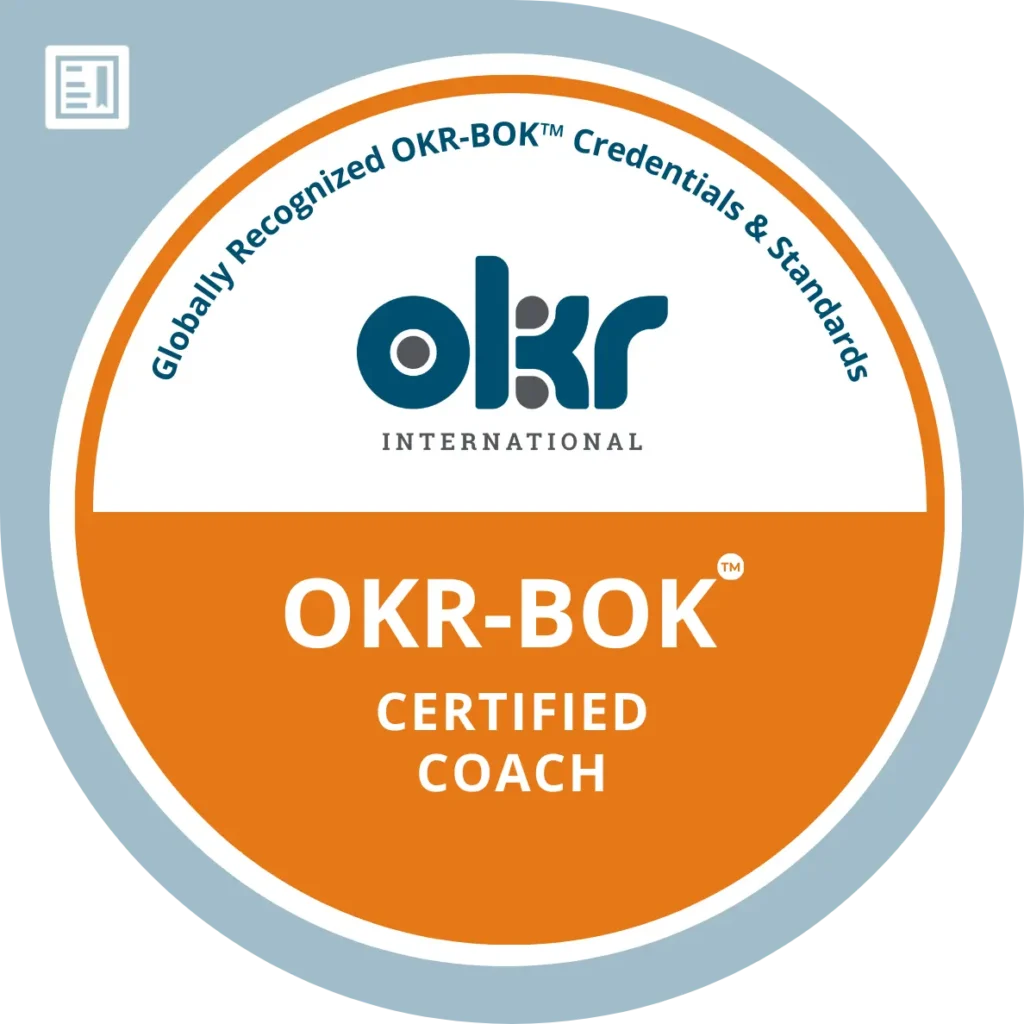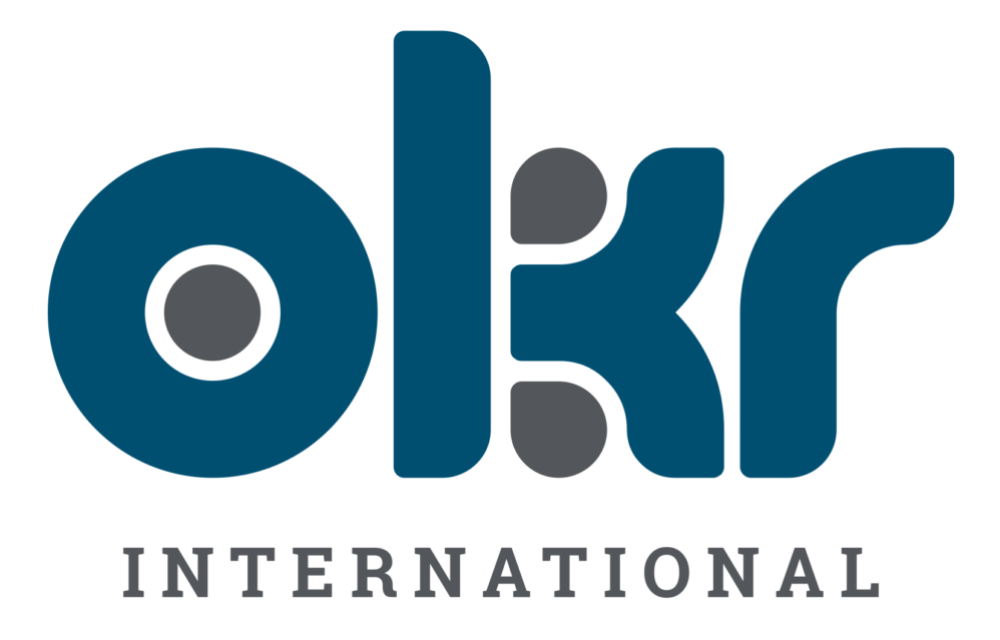Introduction
Strategy rarely fails in the boardroom — it fails in the Tuesday meeting, when priorities blur, calendars overflow, and no one can prove what truly moved the needle. Objectives and Key Results (OKRs) are not a slogan or dashboard; they are an organizational operating system that transforms strategic intent into weekly execution, visible learning, and measurable outcomes. When OKRs work, teams stop guessing and start steering. Leaders shift from status updates to evidence-based decision-making, and resources flow toward what delivers results.
This playbook is a practical OKR guide for leaders who want focus without bureaucracy. It starts with an OKR Charter that defines the “why” — why now, and why it matters. It then introduces a cadence that separates direction from delivery: annual strategic OKRs that set the vector, and quarterly OKRs that do the heavy lifting. Governance remains lightweight, enabling faster decisions, clearer ownership, and genuine momentum.
Purpose and Non-Goals
Why we are adopting OKRs (Purpose)
- Create ruthless focus on a few outcomes that matter, not a long list of activities.
- Translate strategy into execution by making priorities explicit and measurable at every level.
- Increase alignment and autonomy so teams coordinate horizontally and decide locally.
- Accelerate learning through weekly evidence, Micro-OKRs™ for fast experiments, and transparent reviews.
- Improve resource allocation by moving talent and budgets toward Key Results that are working.
What OKRs are (in this playbook)
- A lightweight operating system for setting intent (Objectives) and proving impact (Key Results).
- A shared language that connects annual strategic direction to quarterly execution.
- A decision tool that guides weekly trade-offs, unblocks dependencies, and reallocates resources.
What OKRs are not (Non-Goals)
- Not a task tracker: initiatives and to-dos live in project tools; OKRs define the outcomes those tasks should move.
- Not KPIs rebadged: KPIs monitor the health of the business; OKRs target meaningful change to that health.
- Not performance ratings: OKR scores are for learning and steering, not for compensation or appraisal.
- Not a compliance ritual: ceremonies exist to surface evidence and decisions, not status theater.
- Not a silver bullet: OKRs amplify good strategy and good management; they cannot replace either.
Scope for the first two cycles
- Where we start: company-level OKRs plus 2 to 3 pilot teams with clear cross-functional work.
- Cadence: annual strategic OKRs for direction, quarterly OKRs for execution, weekly check-ins, monthly cross-functional reviews.
- Transparency: all OKRs visible org-wide, with single owners per Objective and per Key Result.
Success criteria (how we will judge the system, not the people)
- Quality: every OKR set passes the writing checklist (clear Objective, outcome KRs with baselines and targets).
- Rhythm: 90 percent of weekly check-ins completed with evidence of KR movement and next actions.
- Decisions: documented resource shifts or priority changes linked to KR signals each month.
- Learning: end-quarter retros produce 3 to 5 concrete improvements to the system and strategy.
- Outcomes: at least two pilot KRs show statistically or operationally meaningful improvement by the end of cycle two.
Risks and mitigations
- Too many OKRs: cap to 3 or 4 Objectives per level, 2 to 4 KRs per Objective.
- Activity masquerading as KRs: enforce outcome language and measurable targets.
- Data gaps: assign Data Stewards, define sources of truth, and agree update frequency before launch.
- Incentive contamination: keep OKR scores separate from compensation and ratings.


OKR-BOK™ Certified Practitioner
Access the globally recognized OKR-BOK™ Certified Practitioner program through our immersive e-learning experience. Learn at your own pace and gain the tools to drive strategy, alignment, and results across your organization.
- 24 Core Modules covering the OKR-BOK™
- Access for 365 Days
- Asynchronous Learning
- Videos/Handouts/OKR Templates/Quizzes
- Digital Badge & Certificate
Definitions (clear, minimal, practical)
Objective
A short, memorable statement of desired outcome or change in state.
Good: “Delight first-time customers so they return within 30 days.”
Anti-pattern: “Launch customer success project Phase 2.”
Key Result (KR)
A verifiable measure that proves the Objective happened. Always has a start value, target, and time box.
Good: “Increase first-purchase → repeat rate from 18% to 28% by Mar 31.”
Anti-pattern: “Send 4 newsletters” or “Improve NPS.”
Initiative
The work you believe will move a KR. Initiatives are hypotheses, not results.
Example: “Redesign onboarding flow,” “Launch 24/7 chat.”
Baseline
The current measured value at the start of the cycle.
Example: “Baseline repeat rate: 18% on Jan 1.”
Target
The specific value to reach by the end of the cycle.
Example: “Target: 28% by Mar 31.”
Cadence
The operating rhythm for planning and review: annual strategic OKRs, quarterly execution OKRs, weekly check-ins, monthly cross-functional reviews.
Alignment (not cascade)
Teams propose their own OKRs that contribute to company Objectives. Overlaps and gaps are resolved in short challenge sessions.
Owner
A single accountable person per Objective and per KR. Collaborators may help; accountability does not dilute.
Source of truth
The system where each KR’s metric is defined, refreshed, and audited (e.g., analytics warehouse dashboard). OKR tool references it, does not replace it.
Operating Principles (the guardrails)
- Outcomes over activity
If a KR can be completed without changing customer or business behavior, it is a task, not a result. - Few over many
3–4 Objectives per level, 2–4 KRs per Objective. Constrain to force trade-offs. - Evidence over opinion
Each KR shows a baseline, target, owner, data source, and update frequency. “Green” requires verifiable numbers. - Alignment over cascade
Publish company Objectives, then invite teams to propose OKRs. Use challenge sessions to remove duplication and choose intentional divergence. - Learning over certainty
Treat initiatives as bets. When a KR stalls, run root cause, adapt the bet, or stop it. Document what you learned. - Separation of concerns
OKRs steer outcomes. KPIs monitor ongoing health. Performance reviews evaluate people. Do not mix the three. - Transparency by default
All OKRs, owners, and scores are visible. Visibility creates coordination, peer pressure, and faster help.
Objective (good): “Shorten time-to-value for new SMB customers.”
KRs (good):
- “Reduce median onboarding time from 9 days to 4 days.”
- “Increase D7 active-user rate from 46% to 65%.”
- “Lift first-30-day expansion from 6% to 12%.”
Initiatives (bets): “Self-serve checklist,” “Live kickoff for top 200 accounts.”
Objective (anti-pattern): “Execute onboarding project flawlessly.”
KRs (anti-pattern): “Hold 6 workshops,” “Ship SOP v3,” “Create Jira epics.”
Micro-OKRs™ in context
- What: Sub-cycle, time-boxed OKRs for sharp experiments or incidents.
- Rules: One Objective, one or two KRs, ≤ 4 weeks, must ladder into a parent KR.
- When: Proving a new conversion lever, responding to a reliability spike, or testing a pricing message.
RAG and scoring shorthand
- Scale: 0.0–1.0 (or 0–100).
- Triggers: Red (root cause + help), Amber (adjust bet), Green (double down), Stretch (harvest learning).
- Update: Weekly numeric movement plus one insight, one next action.

OKR-BOK™ Certified Coach
Become the Strategic Enabler Your Organization Needs.
Gain advanced coaching skills to embed OKRs, align teams, and drive sustainable performance using globally recognized OKR-BOK™ credentials and standards.
- Digital Badge & Certificate - Lifetime Credential
- 16 Hours of intensive experiential learning
- Case Studies & Real-Play Practice Sessions
- Access to e-learning platform for a year - 24 Modules
- Access to the Global OKR Forum
- Opportunity to become a Franchise Partner
- Next Batch
Strategy Linkage and North Star
The narrative in one page
Strategy sets direction, OKRs create traction. Your Vision describes the change you exist to make. Your Strategy defines where to play and how to win. The North Star condenses that strategy into one outcome that best predicts long-term success. Annual Strategic OKRs clarify the few enterprise outcomes that matter this year. Quarterly Execution OKRs translate those outcomes into measurable progress that teams can influence now. Micro-OKRs™ then sharpen learning inside the quarter. Each layer is connected, transparent, and reviewed on a predictable cadence, so resources flow toward what works.
The linkage at a glance
Vision → Strategy → North Star Metric
│ │
│ └─ Health indicators and directional target
│
└─ Annual Strategic OKRs (company level, outcomes for the year)
│
└─ Quarterly Execution OKRs (company and teams)
│
└─ Initiatives and Micro-OKRs™ (bets inside the quarter)
Roles of each layer
- Vision: the enduring purpose and the change you create in the world.
- Strategy: choices about markets, customers, offers, and capabilities.
- North Star Metric: the single outcome most correlated with sustainable value creation. Not a vanity count, a true predictor.
- Annual Strategic OKRs: 3 to 5 enterprise Objectives that state desired changes, each proven by 2 to 4 Key Results.
- Quarterly Execution OKRs: focused Objectives per team that contribute to the annual ones through verifiable Key Results.
- Initiatives and Micro-OKRs™: time-boxed bets that are likely to move specific KRs, with rapid feedback and clear stop rules.
Choosing a North Star Metric
A good North Star does three things:
- Predicts durable value: linked to retention, expansion, margin, or mission impact.
- Reflects customer value: measures behavior that signals real utility, not internal activity.
- Guides decisions: sensitive enough to show movement weekly, simple enough to rally teams.
Examples by context:
- SaaS B2B: “Number of weekly active teams performing the core action.”
- Marketplace: “Orders fulfilled with 5-star experience score.”
- Consumer health: “Monthly users completing a clinically meaningful habit streak.”
From strategy to quarterly work: a mini walk-through
- Start with strategy themes for the year: for example, win SMB, expand ecosystem, raise reliability.
- Write Annual Strategic OKRs: one Objective per theme, each with outcome KRs that prove enterprise movement.
- Publish and align: teams propose Quarterly Execution OKRs that contribute to those KRs.
- Map contribution links: every team KR shows which company KR it moves, and how.
- Close the loop weekly: dashboards show movement on team KRs, roll up into company KRs, and the North Star trend. Adjust bets accordingly.
Guardrails to keep linkage clean
- One owner per KR: contribution is many to one, accountability is one to one.
- No metric smuggling inside Objectives: keep measures only in KRs.
- KPIs vs OKRs: monitor KPIs for health, use OKRs to change that health on purpose.
- Bidirectional learning: quarterly results inform next quarter OKRs, and the annual set is refined mid-year if strategy shifts.
Roles and Responsibilities at a Glance
Accountability map
Executive Sponsor
Sets intent and guardrails, removes organizational blockers, and protects time for the cadence. Signs off the OKR Charter, approves annual Objectives, and arbitrates priority conflicts across functions.OKR Program Lead
Owns the operating system. Runs the calendar, ceremonies, templates, and quality bar. Coaches leaders, tracks adoption metrics, and escalates risks to the Sponsor. Custodian of the playbook and continuous improvement.OKR Champions (per function or business unit)
First line of coaching and quality control. Facilitate drafting and challenge sessions, verify baselines and targets, and ensure alignment links are explicit. Monitor weekly hygiene and follow up on late or low-quality updates.Objective Owners (company or team level)
Accountable for the Objective’s overall evidence of success. Integrate KR signals, decide trade-offs, and coordinate cross-function help. Publish short weekly notes on progress and next moves.Key Result Owners
Single accountable person per KR. Define metric and source of truth, set baseline and target, report weekly movement with one insight and one next action, request help early when off track.Data Stewards
Maintain data definitions and pipelines, ensure refresh frequency, and validate that dashboards match the KR definitions. Resolve data issues within agreed SLAs.Initiative Leads
Drive the work that is expected to move specific KRs. Keep hypotheses explicit, report learning, and stop or scale initiatives based on KR evidence.People Managers
Model outcome thinking, make space for check-ins, and keep performance evaluation separate from OKR scoring. Provide timely feedback and unblock staffing constraints.
Decision rights and touchpoints
Set annual company Objectives: Executive Sponsor with top team, advised by Program Lead.
Approve quarterly company OKRs: Executive Sponsor and Program Lead.
Approve team OKRs: Objective Owner with their leadership, quality gate by Champion.
Change KRs mid-cycle: Only with governance. Program Lead proposes, Sponsor approves.
Reallocate resources based on signals: Objective Owner proposes, Sponsor decides for cross-functional moves.
Weekly, monthly, quarterly rhythm
Weekly team check-in
Attendees: Objective Owner, KR Owners, Initiative Leads, Champion.
Focus: KR movement vs baseline and target, confidence, impediments, next bets, help needed.
Output: 5 to 7 line update posted to the OKR tool with evidence links.Monthly cross-functional review
Attendees: Executive Sponsor, Program Lead, Objective Owners, Champions, Data Stewards.
Focus: dependencies, resource shifts, systemic risks, Micro-OKRs™ learnings.
Output: clear decisions logged, owners and due dates assigned.End-quarter review and retrospective
Attendees: same as monthly, plus key partners.
Focus: score KRs with evidence, extract insights, retire non-strategic items, propose improvements to the system.
Output: updated playbook items, priority changes, and next-quarter drafting brief.
One-page RACI snapshot
Charter approval: R = Program Lead, A = Executive Sponsor, C = Top team, I = Champions
Company OKR drafting: R = Program Lead, A = Executive Sponsor, C = Top team, I = Champions
Team OKR quality gate: R = Champions, A = Objective Owner, C = Program Lead, I = KR Owners
Weekly updates: R = KR Owners, A = Objective Owner, C = Champions, I = Program Lead
Data integrity: R = Data Stewards, A = Program Lead, C = KR Owners, I = Objective Owners
Mid-cycle KR change: R = Program Lead, A = Executive Sponsor, C = Objective Owner, I = Champions
Resource reallocation: R = Objective Owner, A = Executive Sponsor, C = Program Lead, I = Champions
Minimal artifacts per role
Sponsor: OKR Charter, annual OKR memo, decision log.
Program Lead: calendar, ceremony agendas, templates, adoption dashboard, change log.
Champion: alignment map, drafting checklist, quality notes, follow-up list.
Objective Owner: weekly summary, risk and decision register.
KR Owner: KR card with baseline, target, owner, source of truth, weekly updates.
Data Steward: metric dictionary, dashboard spec, data refresh report.
Initiative Lead: hypothesis card, start–stop criteria, learning notes.
Escalation path and SLAs
Red KR for two consecutive weeks: KR Owner flags in check-in, Champion convenes a 48-hour problem-solving huddle, Objective Owner decides bet change or help request.
Data issue blocking updates: Data Steward acknowledges in 24 hours, workaround or fix within 5 business days, Program Lead informed.
Cross-team blocker unresolved after one week: Elevate to monthly review or call an ad hoc Sponsor huddle within 72 hours.
Readiness Quick Check
Use this one-page, self-scoring scan before drafting any OKRs. Score each item 0 to 2
(0 = not in place, 1 = partly in place, 2 = solid). Target 22 or higher out of 28 before launch.
A) Strategy and North Star 0–6
Strategy themes for the year are written and shared org-wide.
A clear North Star metric exists, with definition and owner.
Top priorities are ranked, with 3 to 5 that truly matter.
B) Sponsorship and Roles 0–6
Executive Sponsor is named, available, and willing to make trade-offs.
OKR Program Lead is named, with time and authority to run the cadence.
Champions are assigned to key functions, with time in their plans.
C) Data and Metrics 0–6
Baselines exist for the likely KRs, with reliable sources of truth.
Data refresh frequency supports weekly check-ins.
A Data Steward exists for each critical metric.
D) Operating Rhythm and Hygiene 0–6
Weekly team check-ins already occur, short and decision focused.
A monthly cross-functional forum exists for unblockers and reallocations.
Meeting notes and decisions are captured in a visible place.
E) Tooling and Transparency 0–4
A simple OKR space exists, visible to everyone, with owners and links to dashboards.
Workflow tools for tasks are separate from the OKR tracker, with light integration only where it helps decisions.
Total score: ___ / 28
Readiness gates and next moves
22 to 28 (green): proceed to pilot planning.
16 to 21 (amber): fix the lowest items first, then start a narrow pilot.
0 to 15 (red): pause, close gaps in strategy, sponsorship, or data, then reassess.
Fast remediation playbook
Strategy unclear: run a half-day alignment on the three questions: where to play, how to win, what to stop. Draft one North Star candidate with definition and owner.
Sponsor time risk: agree a simple working agreement, for example monthly 45-minute review, 24-hour decision SLA on cross-team blockers.
No baselines: pick the two most likely KRs per Objective, define formulas, pull last 12 weeks of history, set refresh frequency.
Messy meetings: adopt a 30-minute weekly check-in template: KR movement, confidence, impediments, next bets, help needed. Publish notes in the OKR space.
Tool sprawl: choose one OKR tracker, link to dashboards for each KR, keep tasks in the project tool, not in OKRs.
Role confusion: publish the one-page RACI from the previous section and confirm owners in writing.
Pilot entry criteria (must be true before Day 1)
One page OKR Charter approved, with scope, success criteria, non-goals.
Sponsor, Program Lead, Champions named, calendars blocked for the cadence.
Pilot area selected, with 3 to 4 Objectives max and 2 to 4 KRs per Objective.
Baselines and data sources confirmed for at least 80 percent of pilot KRs.
Weekly check-in and monthly cross-functional slots booked for the full quarter.
Transparent OKR space live, owners displayed, dashboards linked.
Incentives separated from OKR scoring, communicated to all pilot teams.
Scoring Model and RAG in Brief
Purpose
Make progress comparable across teams, force evidence over opinion, and trigger the right decisions at the right time.
The scale
Numeric score: use 0.0 to 1.0 or 0 to 100. Pick one and stick to it across the company.
Meaning
1.0: target fully achieved
0.7: strong progress, short of target
0.3: limited movement
0.0: no measurable progress
Two ways to compute scores
Linear attainment
Score=Actual−BaselineTarget−Baseline\text{Score}=\frac{\text{Actual} – \text{Baseline}}{\text{Target} – \text{Baseline}}Score=Target−BaselineActual−Baseline
Clamp to 0.0 to 1.0. Works best for continuous metrics.
Threshold ladder
Predefine bands with business meaning. Example for cycle time:≤ 4 days: 1.0
5 to 6 days: 0.7
7 to 8 days: 0.3
≥ 9 days: 0.0
Choose the method per KR at the start. Write it on the KR card with the data source.
RAG rules that trigger action
Align RAG with the numeric score and set clear responses.
Red (0.00 to 0.30)
Action within 48 hours: root cause, revised bet, help request. Sponsor looped in for cross-team unblockers.Amber (0.31 to 0.60)
Action within one week: adjust initiatives, add a Micro-OKR for focused experimentation, confirm next checkpoint.Green (0.61 to 0.90)
Action: keep going, consider doubling down on the winning bet, document the pattern.Stretch (0.91 to 1.00)
Action: harvest learning, decide whether to raise the bar next cycle, share the playbook with peers.
Publish these thresholds once, use them everywhere.
Confidence score
Alongside attainment, capture a confidence score from 1 to 5 on whether the team believes it will hit the target by cycle end. Use it to surface risk early, not to replace evidence.
Weekly update format for each KR
Metric snapshot: baseline, latest actual, target
Score and RAG
One insight from the data
One next action or bet change
Help needed, if any
This should be 5 to 7 lines, posted before the team check-in.
Scoring examples
Example 1: Increase repeat purchase rate
Baseline 18 percent, target 28 percent, week 6 actual 24 percent
Linear score = (24 − 18) ÷ (28 − 18) = 0.60
RAG = Amber
Next action: launch Micro-OKR to test onboarding incentive for first 500 SMB accounts
Example 2: Reduce median onboarding time
Baseline 9 days, target 4 days, week 6 actual 6 days
Threshold ladder: 5 to 6 days = 0.7
RAG = Green
Next action: scale the new checklist to all regions and monitor variance
End-quarter scoring protocol
Lock data for the final week and validate sources.
Compute KR scores using the agreed method.
Average KR scores to a draft Objective score only after discussing the relative weight of each KR. If weights were set up front, apply them.
Record two things for each KR: the final score and one learning that will change next cycle’s bets.
Do not back-fit targets or change methods retroactively.
Anti-patterns to avoid
Changing the scoring method mid-cycle
Scoring without a baseline and source of truth
Averaging KRs with wildly different strategic weight without pre-agreed weights
Treating RAG as decoration rather than a trigger for decisions
Using scores for compensation or appraisal
Writing Standards and Examples
The house style
Objectives
One sentence, short and memorable
Describes an outcome or change in state, no numbers inside the sentence
Starts with a strong verb: improve, delight, shorten, expand, restore, defend
Key Results
Prove the Objective happened through verifiable movement in a metric
Include baseline, target, owner, source of truth, time box
Prefer value and behavior indicators over activity counts
Balanced set: at least one leading signal and one lagging impact
Initiatives
The bets that may move a KR
Never listed as KRs and never used to score
Formatting template
Objective: [Outcome sentence]
KR 1: Move [metric] from [baseline] to [target] by 2025. Owner, source: [link]
KR 2: …
KR 3: …
Initiatives (bets): 2 to 4 bullets, optional
Do and do-not heuristics
If it can be “done” without changing customer or business behavior, it is not a KR
If it reads like a project name, it is not an Objective
If a metric cannot move weekly, reconsider as a KPI rather than a KR
If the data source is unclear, the KR is not ready
Two gold examples
Example A: Product-led growth
Objective: Shorten time to value for new SMB customers
KR 1: Reduce median time from sign-up to first successful use from 3 days to 1 day by Mar 31. Owner: Growth PM. Source: Product analytics.
KR 2: Increase day-7 active account rate from 46 percent to 65 percent by Mar 31. Owner: Lifecycle lead. Source: Activation dashboard.
KR 3: Lift 30-day expansion from 6 percent to 12 percent by Mar 31. Owner: Monetization PM. Source: Billing warehouse.
Initiatives (bets): guided checklist in-app, live kickoff for top 200 accounts, targeted help articles.
Why this works
Objective states the outcome, no metrics in the sentence
KRs prove adoption and revenue impact, each with baseline, target, owner, and source
Mix of leading signal (D7 active) and lagging impact (expansion)
Example B: Reliability for enterprise customers
Objective: Restore customer trust in reliability for tier-one accounts
KR 1: Reduce monthly incident rate for tier-one services from 9 to 3 by Mar 31. Owner: SRE lead. Source: Incident tracker.
KR 2: Improve 95th percentile API latency from 480 ms to 300 ms by Mar 31. Owner: Platform lead. Source: Telemetry.
KR 3: Increase quarter-to-date enterprise NPS from 24 to 40 by Mar 31. Owner: CX lead. Source: Survey platform.
Initiatives (bets): circuit breaker rollout, hot path optimization, executive incident comms protocol.
Why this works
Objective names the intended change in state: trust
KRs span cause and effect: technical health and customer perception
Each KR is measurable weekly and tied to a clear owner and system
One annotated anti-pattern
Objective: Execute reliability project flawlessly
KR 1: Complete phase-two design document
KR 2: Hold 6 cross-team workshops
KR 3: Launch version 3.0 of the service
What is wrong
Objective is a project label, not an outcome
KRs are activities, not results, and cannot prove customer or business impact
No baselines, no targets, no data sources, no owners
Rewrite
Objective: Restore customer trust in reliability for tier-one accounts
KR 1: Reduce monthly incident rate for tier-one services from 9 to 3 by Mar 31.
KR 2: Improve 95th percentile API latency from 480 ms to 300 ms by Mar 31.
KR 3: Increase quarter-to-date enterprise NPS from 24 to 40 by Mar 31.
Quick quality checks before sign-off
Objective contains no numbers and is easy to remember
Each KR has baseline, target, owner, and source of truth
At least one KR is a leading signal and at least one is a lagging impact
Weekly measurability is possible for every KR
Initiatives are listed separately from KRs
Tooling and Source of Truth
Principles
Keep OKR tracking separate from task management. OKRs steer outcomes. Project tools run work.
One source of truth per metric. Your OKR tool should reference it, not replace it.
Automate data refresh where possible. Manual updates are a temporary bridge, not a habit.
Optimize for decisions, not decoration. Fewer charts, more signals that trigger action.
Minimal viable setup
OKR space: a shared doc or light OKR tool that shows Objectives, KRs, owners, links to dashboards, weekly updates.
Project tool: Jira, Asana, ClickUp, Trello or similar for initiatives and tasks.
Metrics and dashboards: a simple BI layer like Data Studio, Metabase, Power BI, Tableau, or Looker.
Data store: your analytics warehouse or product analytics tool as the source for KR metrics.
Good, Better, Best stacks
Good
OKRs in Notion or Google Docs. Tasks in Trello or Asana. Dashboards in Data Studio or Metabase. Metric dictionary in a shared sheet.Better
OKR app plus Slack for reminders. Tasks in Jira or Asana. Dashboards in Power BI or Tableau. Warehouse-backed metrics with scheduled refresh.Best
Dedicated OKR platform integrated with SSO. Tasks in Jira with bi-directional links to KRs. Dashboards in Looker or Tableau reading directly from the warehouse. Data catalog for metric definitions and lineage.
KR card fields
Objective link
KR name
Definition and formula
Baseline and target
Owner and collaborators
Source of truth link and refresh frequency
Scoring method and RAG rules
Weekly update thread (latest on top)
Metric dictionary schema
Track this in a sheet or data catalog.
| Field | Description |
|---|---|
| Metric name | Short, unique name |
| Business definition | What the metric means in plain words |
| Technical definition | Exact formula with tables and columns |
| Owner | Accountable person |
| Steward | Data pipeline owner |
| Source system | Warehouse or app where the metric lives |
| Refresh frequency | Hourly, daily, weekly |
| Valid ranges | Expected min and max to catch anomalies |
| Related KRs | Links to KRs that use this metric |
Dashboards that drive action
One page per Objective. Each KR at the top with baseline, latest actual, target, sparkline, and RAG.
Below each KR, show the two or three leading drivers you believe move it.
Include a small decision log on the dashboard so actions and outcomes are linked.
Update automation
Schedule BI refresh to land before weekly check-ins.
Use lightweight reminders in Slack or email that ping KR Owners to post a 5 to 7 line update.
Auto-pull latest values into the OKR tool when possible, but keep the narrative human.
Tooling guardrails
Do not create parallel versions of a metric in multiple tools.
Keep tasks and tickets out of the OKR space. Link, do not copy.
If a metric cannot be refreshed at least weekly, reconsider it as a KR or change the source.
Archive old dashboards to avoid confused duplicates.
Micro-OKRs™ in tooling
Create a short-lived section for Micro-OKRs™ with one Objective and one or two KRs.
Time box to four weeks or less.
Link each Micro-OKR™ to the parent KR and roll up learnings at the monthly review.
Change Story and Adoption Plan
The change story (tell it in one minute)
Our strategy is sound, yet progress stalls in weekly execution. OKRs will give us a single language for outcomes, a clear rhythm for decisions, and evidence to move resources toward what works. We will start small, learn fast, and scale only what proves value. Success means fewer priorities, faster course correction, and visible impact for customers and the business.
Leadership commitments
Publish the OKR Charter and sign it as a team.
Protect the cadence in calendars, especially weekly check-ins and monthly cross-functional reviews.
Make two visible trade-offs each month that align resources to Key Results.
Keep OKR scoring separate from compensation and performance ratings.
Model concise, evidence-first updates in every review.
What will stop to create capacity
Status meetings without decisions.
Project lists presented as Key Results.
Building dashboards that are not used in reviews.
Quarterly goal changes without governance.
5 to 7 line adoption plan
Announce the why, the scope, and the first pilot areas.
Train leaders and pilot teams on writing standards and the weekly check-in format.
Publish draft company Objectives and run alignment sessions for team proposals.
Launch with baselines, targets, owners, and dashboards linked in the OKR space.
Hold weekly check-ins and one monthly cross-functional review, log decisions.
Use Micro-OKRs™ for sharp experiments where KRs stall.
End quarter with scoring and a retro, keep what worked, cut what did not, prepare the next wave.
Communication cues
Tone: direct, evidence led, and time bound.
Cadence: one company note at launch, short weekly notes from Objective Owners, a monthly summary from the Program Lead.
Transparency: all OKRs and scores visible to everyone, including the decision log.
Stakeholders and engagement
Executives: align on annual outcomes and trade-offs.
Managers: run weekly check-ins and coach outcome thinking.
KR Owners and Data Stewards: maintain baselines, targets, and sources of truth.
Finance and HR: connect OKRs to planning and capacity, keep incentives separate.
Internal comms: package updates and wins for broad visibility.
Resistance patterns and countermeasures
“This is extra work.” Pair OKRs with what will stop. Keep check-ins to 30 minutes with a strict agenda.
“Our work is unique.” Use alignment sessions to localize KRs while preserving enterprise outcomes.
“Data is messy.” Assign Data Stewards and set refresh SLAs before launch.
“Scores will be used against us.” Reaffirm the separation from compensation in writing and in practice.
Adoption success signals
90 percent weekly check-in completion with one insight and one next action per KR.
At least two material resource re-allocations per month tied to KR signals.
Improvement in two or more pilot KRs by the end of cycle one.
Fewer priorities in planning, clearer trade-offs in reviews, faster decision times.
How to Use This Playbook
Who should read what (reader guide)
Executive Sponsor & Top Team (20 minutes): Introduction, Purpose & Non-Goals, Strategy Linkage & North Star, Roles, Change Story.
OKR Program Lead (45 minutes): Everything, with special focus on Readiness Check, Scoring & RAG, Tooling, and the 30-day plan below.
OKR Champions (40 minutes): Writing Standards & Examples, Roles, Readiness Check, Tooling, Weekly/Monthly rhythms.
Objective/KR Owners (30 minutes): Writing Standards, Scoring & RAG, Weekly update format, Tooling cheatsheet.
Data Stewards (15 minutes): KR card fields, Metric dictionary schema, refresh SLAs.
How to navigate
Start with the “why”: read Purpose & Non-Goals, then the Change Story out loud to your pilot teams.
Check readiness: score yourselves with the Readiness Quick Check; fix reds before drafting.
Write small, write well: use Writing Standards to produce 3–4 Objectives and 2–4 KRs each.
Wire the data: create KR cards, link dashboards, confirm weekly refresh.
Practice the rhythm: run two dry-run check-ins before launch.
Decide visibly: use the decision log template on every monthly review.
Reflect and refine: close the loop with end-quarter scoring and a short retro.
30-Day Starter Plan (pilot-ready)
Week 1 — Align and equip
Publish the OKR Charter (scope, success, non-goals).
Name Sponsor, Program Lead, Champions, and pilot teams.
Run a 60-minute leader clinic: Objectives vs KRs, examples, anti-patterns.
Complete the Readiness Quick Check and assign owners to any gaps.
Week 2 — Draft and challenge
Draft company Objectives and circulate.
Teams draft their OKRs using the house template.
Run alignment sessions: remove overlaps, confirm contribution links, choose any intentional divergence.
Verify baselines, targets, owners, sources of truth for ≥ 80 percent of KRs.
Week 3 — Instrument and rehearse
Build KR cards and link dashboards; set refresh schedules.
Schedule the weekly check-in and monthly cross-functional slots.
Do two dry-run check-ins using the 5–7 line update format.
Prepare Micro-OKR™ slots for likely experiments.
Week 4 — Launch and manage
Executive Sponsor kicks off, naming the trade-offs we will make to create capacity.
Go live: run the first weekly check-in, post updates and decisions in the OKR space.
Track adoption signals: update completion, RAG distribution, and first resource re-allocations.
Capture an initial lessons log for the month-end review.
One-page templates to copy
OKR Charter: purpose, scope, cadence, roles, success, non-goals, risks.
KR Card: definition, formula, baseline, target, owner, source, refresh, scoring method, RAG, weekly update thread.
Weekly Check-in Agenda: KR movement, confidence, impediments, next bets, help needed.
Decision Log: date, decision, evidence, owner, due date, resulting change to OKRs or initiatives.
Retro Note: what worked, what did not, what we will change next cycle.
Guardrails while using this playbook
Ship the smallest viable system first, then improve.
Do not add tools until a manual version proves value.
Never mix OKR scoring with compensation.
Fewer, better beats more, fuzzier, every time.
When in doubt, return to the three questions: Are we focused on outcomes, is our evidence visible weekly, and did today’s decisions move resources toward what works? If yes, the system is doing its job.
12 Key Steps in OKR Implementation
1) Define intent, scope, and success
- Write a one-page OKR Charter: why OKRs now, problems to solve, scope (company or pilot), success criteria, time horizon, and non-goals.
- Anchor OKRs to strategy and a clear North Star so teams translate direction into measurable outcomes on a fixed cadence.
- Name roles early: Executive Sponsor, OKR Program Lead, OKR Champions per function.
2) Choose cadence and governance
- Annual strategic OKRs for direction, quarterly OKRs for execution.
- Establish ceremonies: planning, weekly check-ins, a mid-quarter review, an end-quarter review plus retrospective.
- Publish decision rights and a visible OKR calendar. Keep governance lightweight.
3) Readiness and capability
- Run a short readiness scan: strategy clarity, data maturity, leadership sponsorship, meeting hygiene. Close must-fix gaps.
- Build shared language through leader-first workshops, writing clinics, libraries of good and bad examples, and a simple scoring model (0.0–1.0 or 0–100).
4) Run a focused pilot
- Pick a motivated business area with clear strategic work and cross-functional dependencies.
- Limit to 3–4 Objectives per level and 2–4 Key Results per Objective.
- Establish baselines, data owners, and update frequency. Define learning goals for scale-up.
5) Co-create through alignment, not command
- Publish draft company Objectives first. Invite teams to propose OKRs that contribute to outcomes, not tasks.
- Replace cascading with alignment sessions that test coherence, remove overlap, surface trade-offs, and confirm intentional divergence where you want exploration.
6) Write high-quality OKRs
- Objectives: short, memorable, outcome-oriented, no metrics inside the sentence.
- Key Results: specific, time-bound, verifiable, favor customer or business value over activity, include clear start values and targets.
- Balance leading indicators (behavior, flow) with lagging impact.
7) Ownership and data plumbing
- One accountable owner per Objective and per Key Result, collaborators named.
- Confirm metric definitions, data sources, dashboards, and update cadences before launch.
- Define scoring and what Red, Amber, Green mean for decisions.
8) Launch and operationalize
- Kick off with visible leadership sponsorship, priorities, and what will stop to create capacity.
- Integrate OKRs into the operating rhythm:
Weekly team check-ins: KR movement, confidence, impediments, next bets.
Monthly cross-functional reviews: dependencies, reallocation, unblocking.
Keep updates short and evidence-based.
9) Manage actively, not ceremonially
- Use OKRs to drive choices: when KRs slip, run root cause, adjust bets, and move resources.
- Celebrate shipped impact and learning, not plan conformance.
- Keep dashboards visible and bias updates toward KR insight.
10) Tie initiatives to Key Results
- After OKRs are set, list candidate initiatives that could move each KR.
- Reprioritize initiatives as evidence emerges. Do not edit KRs mid-cycle without governance.
11) Review, score, and reflect
- End-quarter: score KRs against evidence, extract insights, retire what is no longer strategic, and evolve what is.
- Convert retro outcomes into improvements to cadence, templates, training, and data.
12) Scale deliberately
- After two solid cycles with clean cadence and strong coaching, expand to additional teams.
- Add cross-functional or platform OKRs for shared capabilities.
- Codify the playbook and provide enablement: coaches, clinics, office hours, fit-for-purpose tooling.







